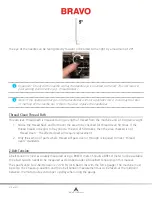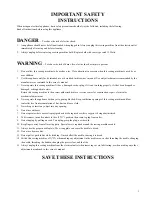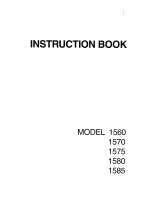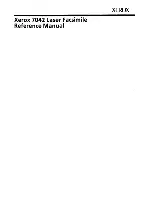
264 of 271
2. Color change to the closest needle (annotated in the base casting, right front corner). Move the
needle to bottom dead center and center the needle plate on the needle. If you are not able to
bring the needle down into the needle plate hole, the head is out of alignment and the machine
will require shipment to the factory for depot repair.
3. Compare the centering of Needles 1 and 16 in the needle plate hole. If the difference between
the two is greater than ±0.004” [0.1mm], the head is out of alignment. There is no way to mea-
sure head alignment. If a visual comparison of the needle centering of Needles 1 and 16 are sub-
stantially different, the head is out of alignment and requires realignment. This is best done at the
factory and Technical Support should be contacted if this situation is discovered.
Head Alignment Procedure
Head alignment is best performed at the factory with specialized tools and fixtures. Please contact your
technical support provider for specific instructions.
Needle to Hook Gap
Hook gap repeatability refers to the hook gap on all of the needles compared to the “closest needle.”
Measurement
See needle to hook gap section in this manual.
Hook to Rotary Support Gap
See hook to rotary support gap section in this manual
Take-Up Lever Stroke
The take up lever stroke is the amount of vertical distance that the take-
up lever travels from bottom dead center to top dead center. This distance
should be between 56-58 millimeters.
Measurement of Take-Up Lever Stroke
•
Note: Measurement of the take-up lever stroke must be done with
the grabber blade mounted.
1. Hang a weight (approximately 10-12 grams) to the take up lever so
that it hangs adjacent to the scale on the ruler pressed to the bottom
side of the middle thread guide.
2. Press the E-stop button (in case the machine is powered up), rotate
the z-shaft manually through a complete cycle using the bottom of the 10-12 gram weight as the
Table of Contents








































